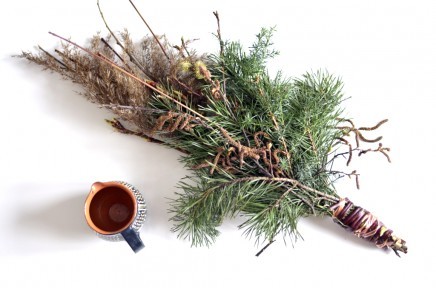Easter palms in Silesia are a bit different than those in other polish regions. They are much less d
Easter palms in Silesia are a bit different than those in other polish regions. They are much less decorative, just a bouquet of green branches and herbs, but each element has a symbolical and theological meaning. Usually there’s five (the number of wounds on Jesus Christ body) or seven (as in Seven Sorrows of Mary) different branches. One must have thorns - it symbolizes the Crown of Thorns on Jesus Christ’s head. Most commonly used are Rosa canina, juniper (wahold), or pine tree (wajmundka). Another must be purple willow (siba) - it’s symbolizing the blood of Jesus Christ. There must be also Staphylea pinnata (kokocz) - due to it’s silesian common name asociated with a rooster announcing the betrayal by st. Peter, and some ribes - in silesian language called świyntojonka and therefore associated with st. John figure. Other commonly used herbs and branches are: gooseberry (wieprzki), elderberry (flider), Viburnum (kalina), Frangula alnus (kruszyna), hazel (lyska), mistletoe, common reed (trzcionka). All were about 30-50 cm long and tied together with a strap from whip (hajka z bicza), in relation to The Flagellation of Christ. Source: „Rok śląski”, Marek Szołtysek, Wydawnictwo „Śląskie ABC” cop. 2010, s. 67, also odkrywając śląsk. picture source: gryfnie.com -- source link
Tumblr Blog : weirdpolis.tumblr.com
#silesia#polish tradition#easter palms#palm sunday#palma wielkanocna
